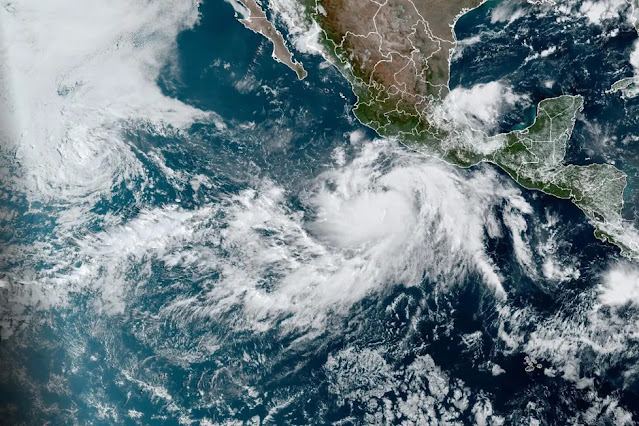 |
| Photo: www.mercurynews.com |
LOS ANGELES - The anticipation of potential overnight havoc caused by Tropical Storm Hilary had Southern California authorities on high alert. The storm's furious flash floods, which struck both east and west of Los Angeles, left officials preparing for possible severe damage after its historic impact a day prior.
Even though the
National Weather Service had downgraded the former hurricane to a tropical
depression, California Governor Gavin Newsom had already declared a state of
emergency for much of Southern California. This was a significant move, given
that the region is more accustomed to drought than intense storms. Flash flood
warnings were in effect until at least 3 a.m. (1000 GMT) on Monday.
Forecasts indicated
that mountain and desert areas could receive an unprecedented 5 to 10 inches
(12 to 25 cm) of rain. To put this in perspective, these desert regions
typically receive this amount of rainfall over an entire year.
Prior to its arrival in
Southern California, the storm traversed Mexico's Baja California peninsula,
where Pacific hurricanes are known to impact. Tragically, it claimed at least
one life in Mexico due to flash flooding and reportedly washed away roads.
The deluge turned city
streets into raging torrents, as evident from social media images that depicted
urban areas transformed into river-like channels. Sunday afternoon marked the
storm's entry into the United States, hitting San Diego county as the first
tropical storm ever recorded in the area. This was followed by the storm's
arrival in Los Angeles county, marking the first time since 1939 that such
severe weather had impacted the region, resulting in widespread flooding.
San Bernardino county,
located to the east of Los Angeles, was compelled to issue evacuation orders
for towns in the mountains and valleys. Social media posts illustrated torrents
of water, mud, rocks, and trees inundating these areas.
In the more densely
populated Ventura county northwest of Los Angeles, the National Weather Service
issued warnings about life-threatening flooding as nearly 2 inches (5 cm) of
rain fell within a mere two-hour span.
Reacting swiftly, U.S.
President Joe Biden directed federal agencies to deploy personnel and resources
to the affected region, aligning with local officials' preparations that had
been underway for days.
Despite the initial
impact of the storm, Los Angeles Mayor Karen Bass remained concerned about
potential complacency among residents. She feared that people might
underestimate the situation, only to be caught off guard when later bands of
the storm circled back, potentially causing more damage to those unprepared.
Mayor Bass expressed
her concern during a Sunday news briefing, saying, "We know that it could
get much worse. My concern is that people will be a little dismissive and go
out when we need people to stay at home, to stay safe."
Officials highlighted
the vulnerability of Los Angeles county's 75,000 homeless individuals, along
with hillside canyons and areas recently ravaged by wildfires. As a
precautionary measure, the two largest school districts in the state, located
in Los Angeles and San Diego, canceled classes for Monday.
The storm left
residents stunned in the nearby town of Rancho Mirage, where water and debris
overwhelmed closed roads. At least one pickup truck became stranded in water
that nearly reached the top of its bed. A local resident, Sean Julian, 54,
shared his amazement, stating, "It's quite amazing. I've never seen
anything like this. I'm seeing a lot more trees down. And there's a big tree
that just fell over there, and I probably shouldn't be out here."
Posting Komentar untuk "Tropical Storm Hilary's Unleashed Fury: Devastation Strikes Southern California"